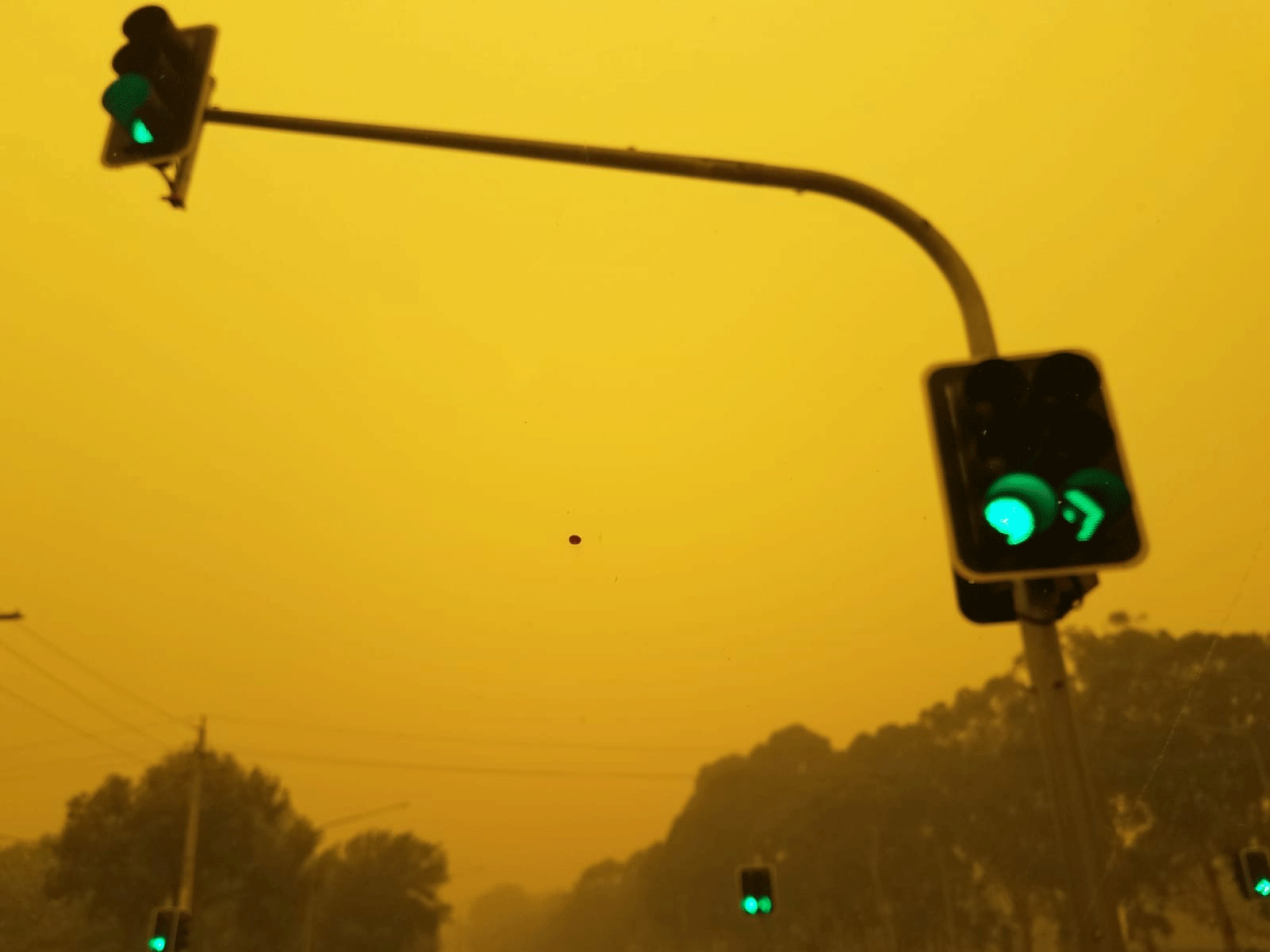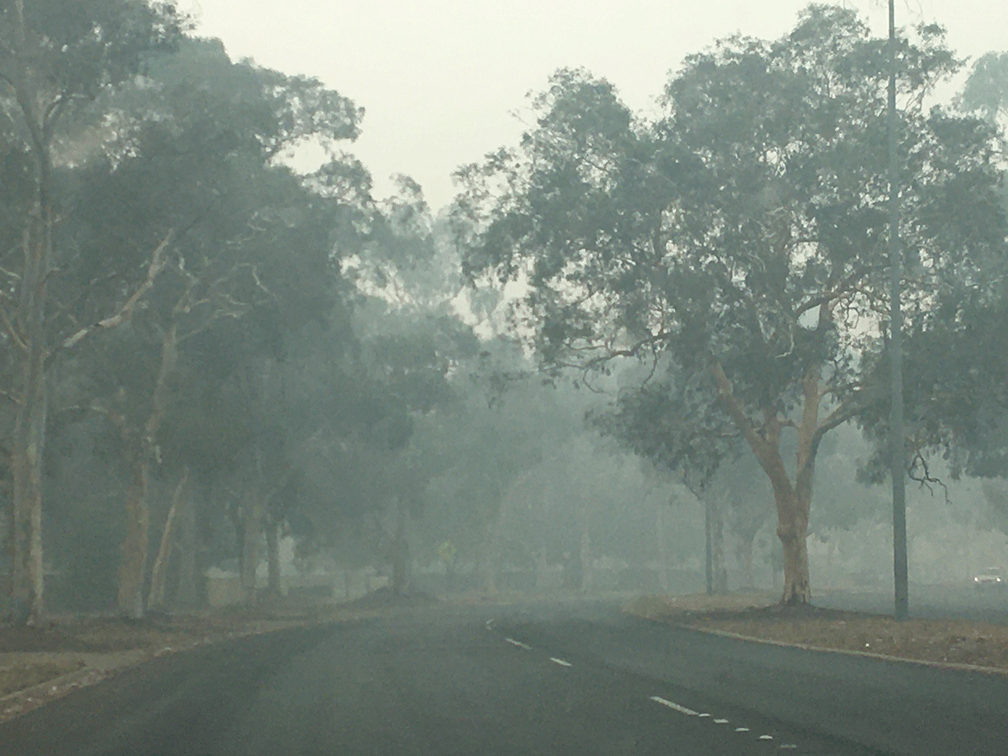A rapidly-evolving new normal: Pep Canadell comments on Australia’s Fires
Since September 2019, Australia has experienced an ongoing, unprecedented fire season due to record-breaking heat, drought, and high wind conditions. At least 27 people have died, over 2,000 homes have been destroyed, and thousands of residents and tourists have evacuated. Millions of acres have burned – comparable to the entire size of England. Scientists worry about entire species going extinct, as estimates predict a billion animals could perish due to the fires.
Future Earth is a global organization, and in addition to Future Earth Australia, many scientists who lead and participate in our networks live and work in this affected region.
Pep Canadell, Executive Director of the Global Carbon Project (a global research project of Future Earth) lives in Canberra, Australia’s capital, located in the southeast part of the country – where the fires have hit hardest. Although there have not been fires in the immediate vicinity, Canberra is currently surrounded by over 100 fires and has been covered with smoke since the beginning of December. This has led to dangerous pollution episodes no city in Australia has ever experienced before, even ranking for several days as the single most polluted city in the world, according to Canadell.
Swimming pools are closed, as well as most of the national attractions, and “outdoor summer life was all but over even before the summer started.”
At the peak, Canadell and his family retreated to their kitchen, sealing it with tape to prevent pollution from leaking into their home – while temperatures soared in Canberra to the single highest daily maximum temperature recorded of 43.6 C (110.5 F), leading to unbearable conditions inside. After 20 years without air conditioning, he admits it is time to install this potentially life-saving technology.
The irony of the situation of course, is that climate adaption requires a lot more energy. But even during this crisis, Canadell notes, Canberra is proud to reach 100 percent renewable energy for its electricity grid (wind and solar) this year.
We spoke further with Canadell about these ongoing fires, their effects on the region, and what they mean in greater context.

What is different about this year’s fires, and what do they mean in context for in Australia and the world?
Canadell: At this point, there is no doubt that the extent of the fires in the southeast are unprecedented in the modern history of Australia.
There is no doubt that emissions from this year’s “Great Burnout” in Australia will be very significant globally, on par with emissions from the Amazon fires this past year, and likely higher. Our preliminary estimates show that by now, CO2 emissions from this fire season are as high or higher than the CO2 emissions from all anthropogenic emissions in Australia. So effectively, they are at least doubling this year’s carbon footprint of Australia.
There is a lot of fire every year in Australia, with as much as 30 million hectare being burned on an average year – but largely in the north and Western parts of Australia, where landscapes are dominated by savannas, open woodlands, and grass/pasture lands. What is different this fire season is the unusual extent of the fires in the southeast, where the remaining temperate forests are, therefore allowing for fires of high intensity.
What analogies could we draw with the fires in the Amazon this past year?
The most important is that fire plays significant role in the evolution of our atmosphere, and that humans have influenced that role in many different ways for centuries. Both the Amazon fires and the Australian fires illustrate this well in very different ways.
While the Amazon fires are the direct cause of human burning, with the purpose to clear land for pastures and agriculture, the fires in Australia this fire season are largely driven by dry lightning and accidental fires under climatic conditions very conducive to fire activity. (Despite the big press coverage that arsonists had a big role in the fires in Australia, it has been shown that it played an extremely minor role).
Both cases call for a new rethink of how we use fire and adapt to live with fire. Both require we think about new land practices, reducing the risks of big fire events, and adapting to a new rapidly evolving environment.

How are local scientific communities responding to the fires?
Even before the major crisis unfolded, in response to what was clearly an unusual fire season, I started talking to some of my colleagues who are specialists on fire ecology, carbon emissions, and remote sensing – both in Australia and overseas. We have established a rapid response small team doing an initial set of analysis of burned areas and trends, and fire carbon emissions.
But the fire crisis couldn’t come at a worse time of the year, when most research institutions and Universities are at a low – with most people taking time off for the holiday season, summer break, and school holidays. There has been a slow mobilization at a broader scale, which will hopefully pick up pace now.
Should we have seen this kind of thing coming?
This year’s intense fire activity was to be expected indeed. Fire weather, and specifically Australia’s forest fire danger index, have all been growing for the past 30 years, and all showed that we were trending very high this year, too.
Then why didn’t Australia prepare differently?
Australia is a place of many climate extreme and agencies and communities are well attuned and prepared for it. However, in order to be fully prepared for what climate change might bring there is the need to have a full appreciation and recognition by all actors in the country that the climate is changing quickly – and it is changing because the accumulation of human driven greenhouse gases in the atmosphere. Australia has been a pioneer on climate adaption research when few countries in the world were embracing the need more than 15 years ago, but some of the great work had stopped since for lack of support.
What do these fires mean in the context of natural climate solutions?
It is a great reminder of the risks of over-relying on land-based solutions, or natural solutions, to fix the climate crisis as sometimes it is proposed.
Our landscapes have lost a lot of carbon over hundreds of years and it is a compelling proposition to bring some of that carbon back. It is compelling because it is good for soil fertility, plant productivity, and overall health of the ecosystems, their biodiversity, and the services they provide. However, there is no “permanence” equivalence between avoiding fossil fuel CO2 emissions in the first place and removing an equivalent amount in trees, grasses, and soils, because they can be subject to disturbances as part of ecosystem dynamics – some now increasing in frequency/intensity because climate change.
Yet, we must promote policies to restore our degraded ecosystems and promote practices which enhance soil carbon (e.g. no tillage), because there are many additional benefits beyond the climate benefit.

What are some takeaways from the Global Carbon Project’s recent work that connect to these events?
We [the Global Carbon Project] have done a lot of work on the strength and growth of the global land sinks, the sensitivity of those sinks to climate variability, and the very regional character of the sink dynamics. Although our research has made great progress in understanding this evolution in the historical context, and projecting sinks into the future under climate change, we have a lack of understanding how these more catastrophic regional tipping points could ultimately affect (or not) the global trends in accumulation of atmospheric greenhouse gases in ways we have not fully being able to model yet.
This year’s unprecedented fire season in Australia is a reminder of the work ahead in better understanding the dynamics of disturbances – and not only for fires, but to understand how climate change effects will materialize, often not in a smooth continuous way, but abruptly.
Are there specific scientific reports or papers that people should be aware of related to these fires, or could use as good context for understanding the situation?
As a starting point, I would suggest to read the “State of the Climate 2018” by BOM and CSIRO (or download the report directly from here), where the trends of increased temperature and extremes are clear, as well as increased fire weather, and decreased winter rain in the South and southeast where the fires are occurring – which is a priming of the forest for more fire activity during summer.
An additional resource to understand the changing fire weather in Australia and climate change is this brochure by Andrew Dowdy of the Bureau of Meteorology, Melbourne, Australia.
And in light of the Australian fires, ScienceBrief with scientists from the University of East Anglia (UEA), Met Office Hadley Centre, University of Exeter, Imperial College London, and CSIRO Oceans and Atmosphere, have conducted a Rapid Response Review of 57 peer-reviewed papers published since the IPCC’s Fifth Assessment Report in 2013. This new summary statement examines the links between fire and climate change through a compilation of literature.
What do you see as the best-case scenario this summer in Australia? What should we learn from this season of extreme fire?
Nationally, I expect that it will bring government, disaster, and resilience management agencies, research and the land communities together, to develop a resilience and adaptation plan for what is a rapidly-evolving new normal. A full recognition of links to climate change are fundamental to understand the nature of what we are trying to manage and adapt to.
From a scientific point of view, there is a need to sharpen our climate change attribution skills and the long-term data that is scattered in state agencies and the federal government, to come up with a solid understanding of the trends and drivers of fire, and their likely evolution in the future.
For the world, take notice of what is happening in Australia. Australia is the “canary in the coal mine,” showing the magnitude and seriousness of the impacts of climate change. There is absolutely no doubt that what is happening in Australia now will extend to many other parts of the world in the coming years to decades if we do not stabilize the climate urgently.
DATE
January 14, 2020AUTHOR
Dr. Pep CanadellKelsey Simpkins
SHARE WITH YOUR NETWORK
RELATED POSTS
Future Earth Members Selected as Experts for IPCC Special Report on Cities
Sign the COP28 statement. The Science is Clear: We Need Net Zero Carbon Dioxide Emissions by 2050.
Future Earth Networks Organize Workshop on Impacts of Increased Wildfires on the Ocean and Other Earth Systems